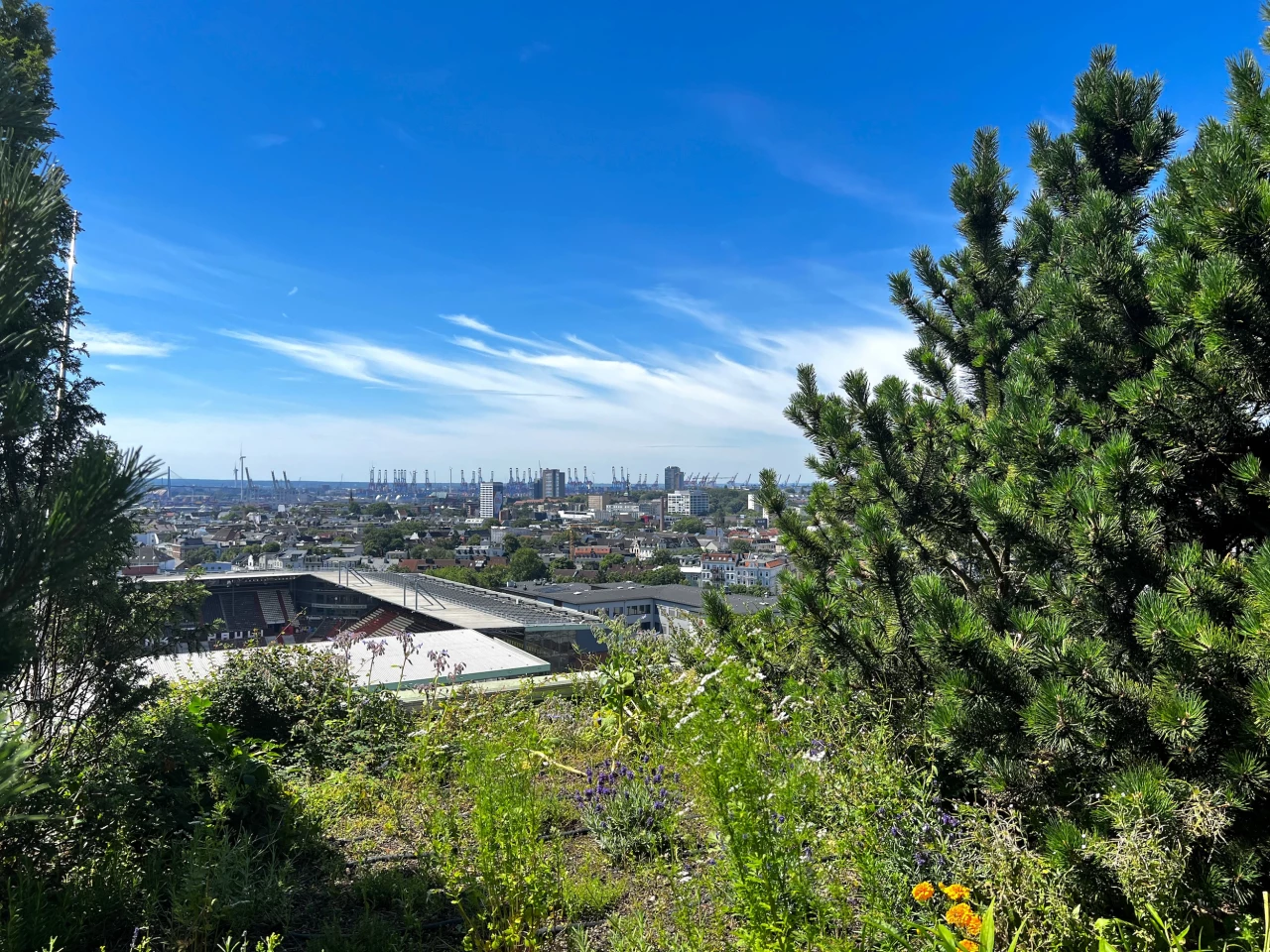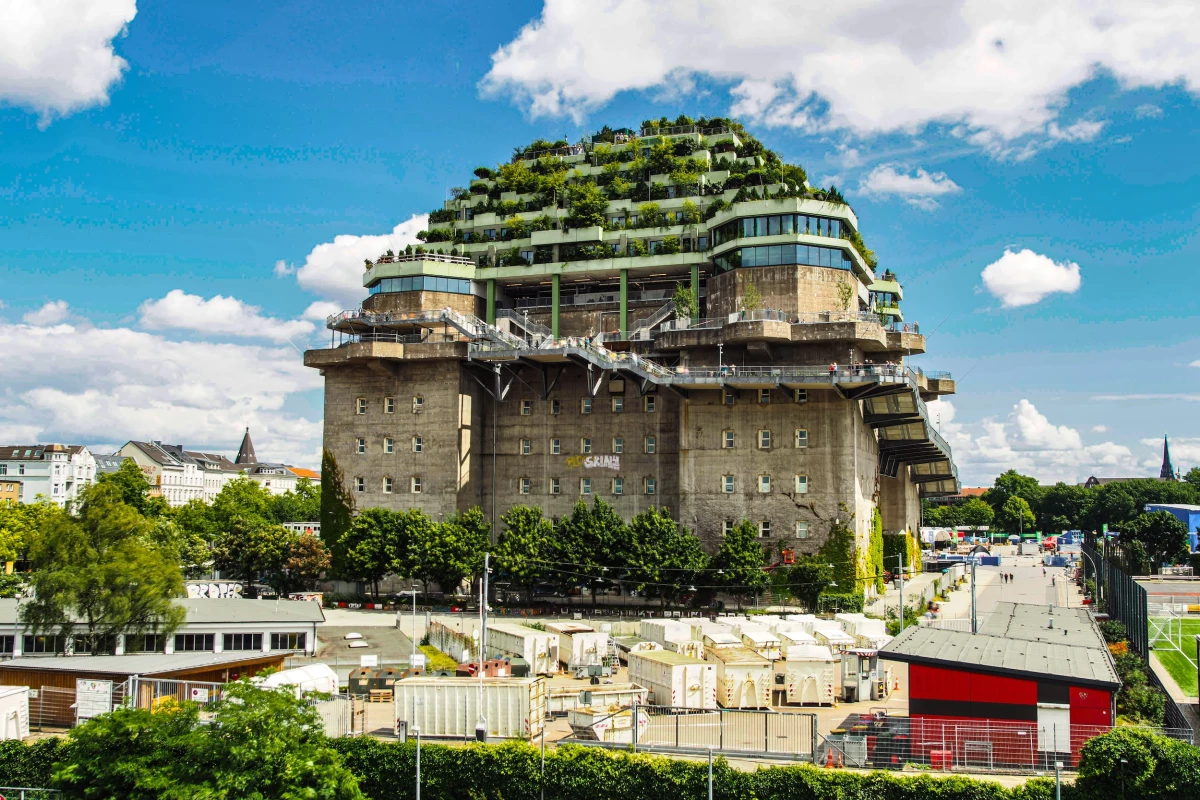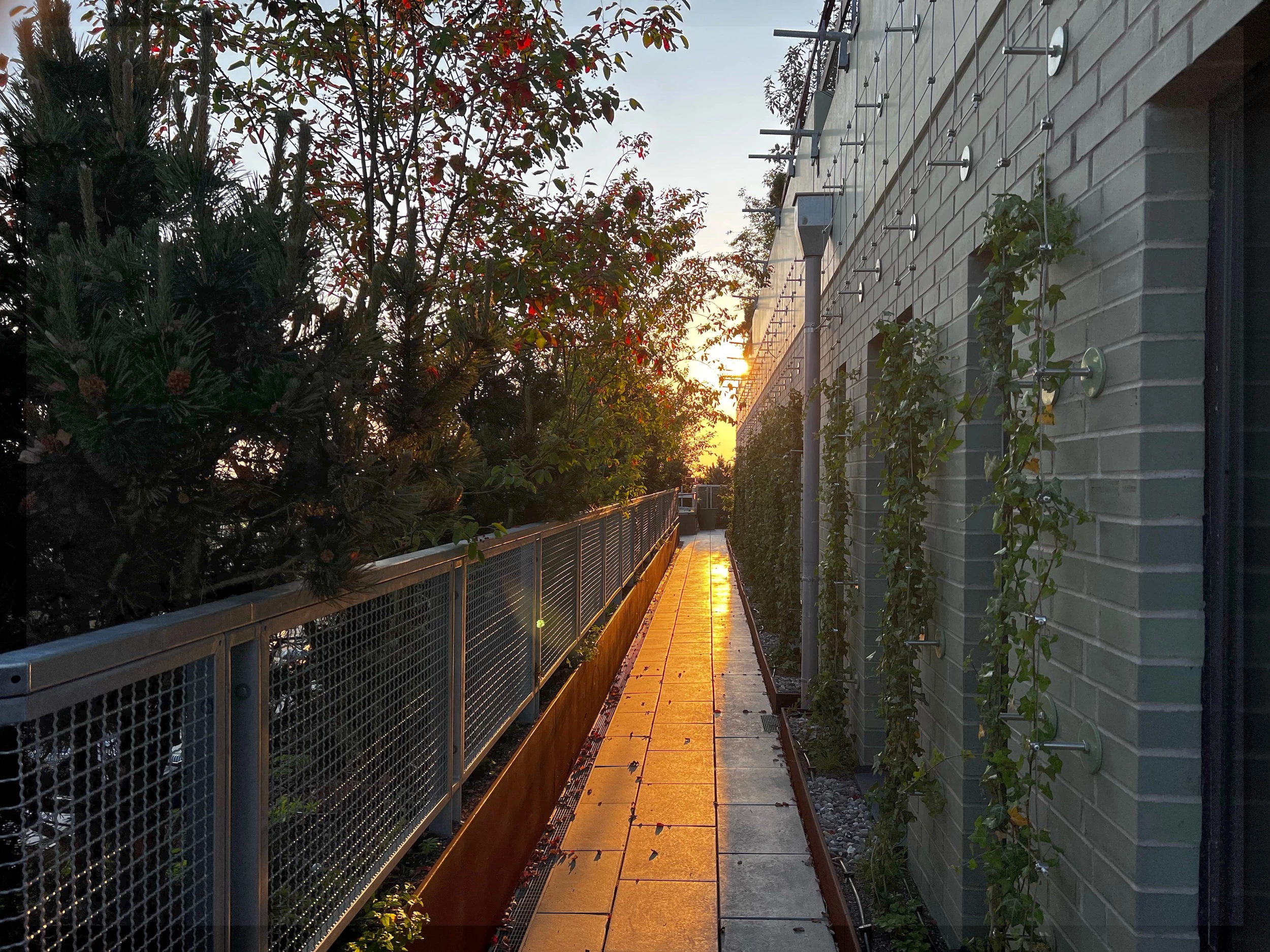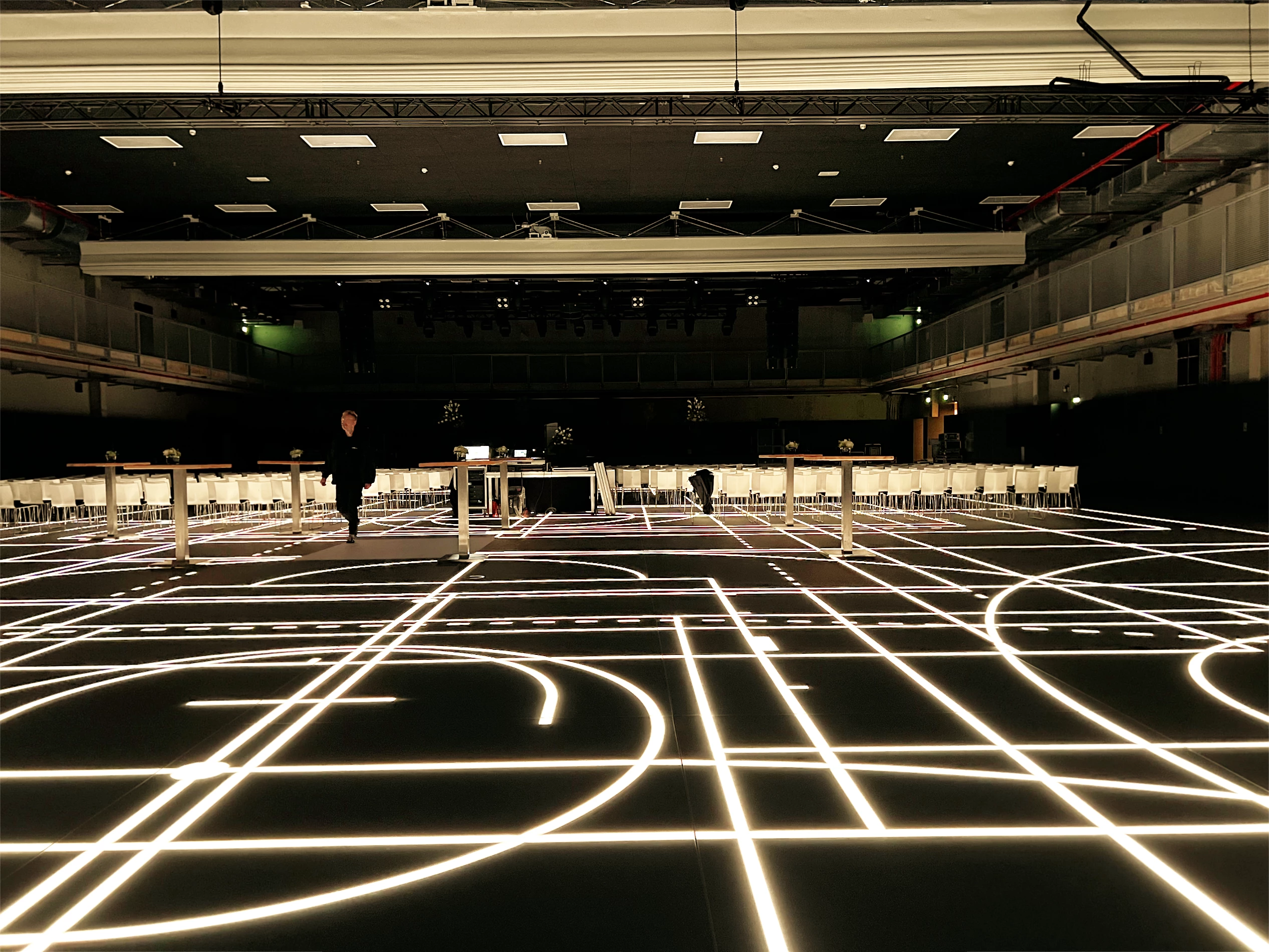The St. Pauli Bunker was commissioned during WWII to protect Hamburg residents from Allied bombing raids. Once a symbol of Nazi ideology, the massive structure has received an ambitious new extension and makeover into a trendy greenery filled hotel and restaurant space, as well as a large park and "mountain path."
Originally known as the Flakturm IV, the St. Pauli Bunker is known as a Hochbunker or High Bunker, and was built in 1942 by forced laborers. It had an official capacity of 18,000 but was used to shelter up to 25,000 Hamburg residents at a time. Following the end of the war, the Allies did actually plan to blow it up as part of a larger denazification scheme but due to its thick walls and central location it was deemed unsafe to do so.
Stuck with the hulking structure in a bustling Hamburg district, the postwar years saw locals make good use of it as an art and cultural hub, as well as a music venue and events center. These remain but a huge extension has now been installed on the outer bunker walls that weighs around the same as 60 Airbus A380s and is supported by 16 massive steel pillars. The extension adds five new floors, increasing the bunker's height above ground from 35 m (114 ft) up to 58 m (190 ft). These contain a new hotel, restaurants, a cafe and social spaces.
"The public recreational space combines a number of ecological, cultural and historical aspects," explains the press release. "This is because, in addition to the spectacular urban garden, there are spaces for district culture, exhibition areas, urban gardening facilities, accommodation for scholarship holders and artists, a modern three-field hall for school sports and cultural events, and a hotel. In addition, the historic site has for the first time a memorial and information center: in the former control center and at other locations in the existing building, an initiative commemorate the victims of the Nazi regime and World War II."

Alongside the interior areas, around 23,000 trees and plants have been planted on the bunker, creating a rooftop park measuring 2.5 acres (1 hectare), which is free-of-charge for visitors. To reach it, one must climb up a total of 335 steps or walk along a meandering 560-m (almost 1,900-ft) "mountain path" around the exterior, taking in views of the city (there is an elevator too for those who can't make the climb).
Plants include fruit trees, shrubs, pines, maple, and ivy and rose bushes. The larger plants are securely anchored to protect them against wind gusts, and a team of landscapers with industrial climbers will be on duty to maintain it all. A temperature-controlled irrigation and drainage system is also installed that manages rainwater flow.
The St. Pauli Bunker redevelopment was headed by Matzen Immobilien KG for a budget of approximately €100 million (US$110 million). It follows another somewhat similar project elsewhere in Hamburg called the Energy Bunker.
Source: St. Pauli Bunker








